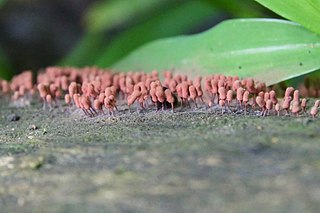behold the mold
i would like to introduce to you nature's best weird little guys: the slime molds.
disclaimer: i am an enthusiast, not a scientist, and i've definitely oversimplified things. links and reading material are at the end.
what?
slime molds are not molds, first of all. there are many species of slime mold spread across several branches of the tree of life, but none of them are actually fungi - most of them are amoebae. here i'm going to be talking specifically about the class Myxogastria, also called the plasmodial slime molds.
why do we care?
first of all, the slime lifestyle is cool as hell - a Choose Your Own Adventure on a microscopic scale. they have a lot to teach us about the origins of complex multicellular life.

from the get-go, slimes have every contingency plan. they can change shape to suit their environment straight out of the spore. on dry land they act like regular amoebae, but in wet conditions, they can grow tails (flagella) to propel themselves through the water. when conditions are particularly adverse, they can nope out entirely by forming a shell and going dormant, sometimes for years.
when compatible amoebae meet up, they can fuse together into a plasmodium - a new individual with twice as much genetic information. the plasmodium grows and grows, dividing its nucleus over and over. it's still just a single cell, but it can be up to a square meter large and full of thousands of nuclei.
later on, environmental conditions may trigger the fructification process. the plasmodium will stop eating and instead crawl towards a lit, open area that will maximize spore dispersal. there, it transforms into a fruiting body, which can take many forms depending on the species. the fruits are packed with absurd numbers of spores, which are dispersed by the wind and little friends like beetles or mites.
from these spores emerge the next generation of slimes, and the cycle continues.
meet the molds
enjoy this non-exhaustive list of some of my favorite species:
wolf's milk - Lycogala epidendrum

carnival candy - Arcyria denudata

Comatricha nigra

chocolate tube - genus Stemonitis

Ceratiomyxa porioides

red raspberry - Tubifera ferruginosa

links
The Wikipedia page on Myxogastria is a great place to start.
Sarah Lloyd is an Australian researcher documenting her local slime mold species in Tasmania. her macro photos are stunning! she has also written a book, Where the Slime Mold Creeps - i haven't had a chance to read it yet, but i hope to soon.
my introduction to slime molds was, fittingly, Introductory Mycology by CJ Alexopoulos, who wrote about them with such a reverent fascination that i had to follow the rabbithole.
for many, many more photos - and to see what slimes you might have nearby - i highly recommend exploring the True Slime Molds taxon on iNaturalist.
coming soon (?)
i would love to expand this to include more types of slime, especially the cellular slime molds, which fascinate me endlessly.
credits
all images including the background image are from Wikimedia Commons. all other images link to their Commons page.